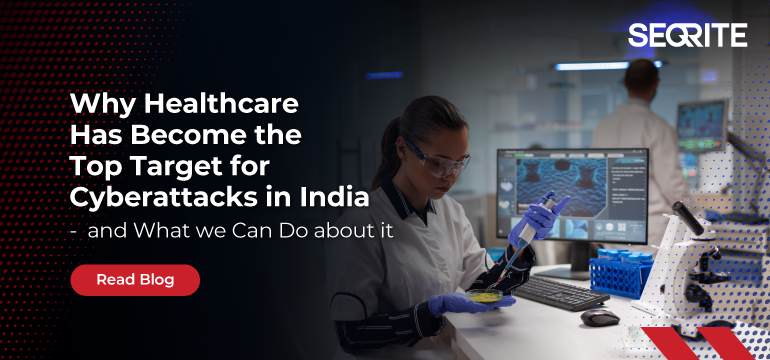In 2024, one industry stood out in the India Cyber Threat Report—not for its technological advancements but for its vulnerability: healthcare. According to India Cyber Threat Report 2025, the healthcare sector accounted for 21.82% of all cyberattacks, making it the most targeted industry in India.
But why is healthcare such a lucrative target for cybercriminals?
The Perfect Storm of Opportunity
Healthcare organizations are in a uniquely precarious position. They house vast amounts of sensitive personal and medical data, operate mission-critical systems, and often lack mature cybersecurity infrastructure. In India, the rapid digitization of healthcare — from hospital management systems to telemedicine — has outpaced the sector’s ability to secure these new digital touchpoints.
This creates a perfect storm: high-value data, low resilience, and high urgency. Threat actors know that healthcare providers are more likely to pay ransoms quickly to restore operations, especially when patient care is on the line.
How Cybercriminals are Attacking
The India Cyber Threat Report highlights a mix of attack vectors used against healthcare organizations:
- Ransomware: Threat groups such as LockBit 3.0 and RansomHub deploy advanced ransomware strains that encrypt data and disrupt services. These strains are often delivered through phishing campaigns or unpatched vulnerabilities.
- Trojans and Infectious Malware: Malware masquerading as legitimate software is a standard tool for gaining backdoor access to healthcare networks.
- Social Engineering and Phishing: Fake communications from supposed government health departments or insurance providers lure healthcare staff into compromising systems.
What Needs to Change
The key takeaway is clear: India’s healthcare organizations need to treat cybersecurity as a core operational function, not an IT side task. Here’s how they can begin to strengthen their cyber posture:
- Invest in Behavior-Based Threat Detection: Traditional signature-based antivirus tools are insufficient. As seen in the rise from 12.5% to 14.5% of all malware detections, behavior-based detection is becoming critical to identifying unknown or evolving threats.
- Harden Endpoint Security: With 8.44 million endpoints analyzed in the report, it’s evident that endpoint defense is a frontline priority. Solutions like Seqrite Endpoint Security offer real-time protection, ransomware rollback, and web filtering tailored for sensitive environments like hospitals.
- Educate and Train Staff: Many successful attacks begin with a simple phishing email. Healthcare workers need regular training on identifying suspicious communications and maintaining cyber hygiene.
- Backup and Response Plans: Ensure regular, encrypted backups of critical systems and have an incident response plan ready to reduce downtime and mitigate damage during an attack.
Looking Ahead
The India Cyber Threat Report 2025 is a wake-up call. As threat actors grow more sophisticated — using generative AI for deepfake scams and exploiting cloud misconfigurations — the time for reactive cybersecurity is over.
At Seqrite, we are committed to helping Indian enterprises build proactive, resilient, and adaptive security frameworks, especially in vital sectors like healthcare. Solutions like our Seqrite Threat Intel platform and Malware Analysis Platform (SMAP) are built to give defenders the needed edge.
Cyber safety is not just a technical concern — it’s a human one. Let’s secure healthcare, one system at a time.




